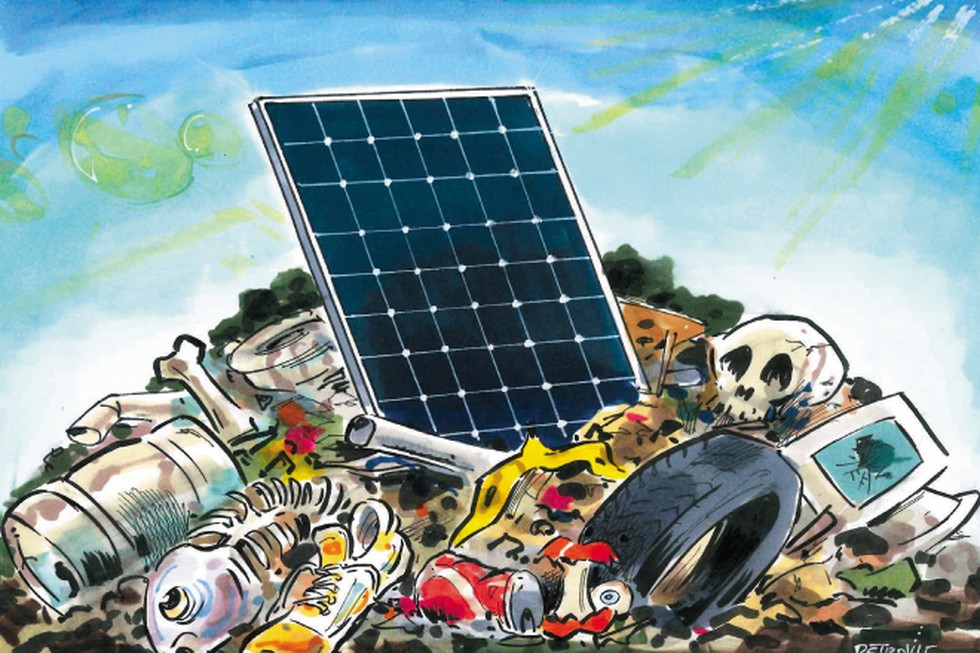Key highlights of the study:
- What is solar e-waste? It includes photovoltaic cells that have reached their life cycle and haven’t been recycled.
- Dangers: Solar cell modules are 80% glass and aluminium, and non-hazardous. Other materials that are used includes polymers, metals, metallic compounds and alloys, and are classified as potentially hazardous. They contain potentially hazardous chromium, silicon tetrachloride, cadmium, selenium and sulphur hexafluoride.
- Solar e-waste projections: By 2050, India will likely stare at a pile of a new category of electronic waste, namely solar e-waste. India’s PV (photovoltaic) waste volume is estimated to grow to 200,000 tonnes by 2030 and around 1.8 million tonnes by 2050.
- Reason for the problem?
- India is among the leading markets for solar cells in the world, buoyed by the government’s commitment to install 100 GW of solar power by 2022. India has installed solar cells for about 28 GW.
- However, currently, India’s e-waste rules have no laws mandating solar cell manufacturers to recycle or dispose waste from this sector.
